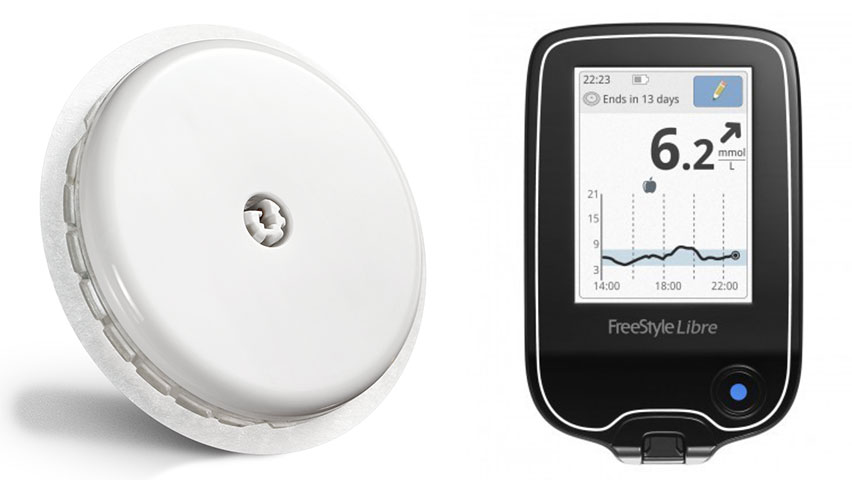Diabetes monitor is ‘game changer’
A new method of measuring blood glucose levels in people with diabetes is a significant advance in the management of the disease, according to an independent assessment by University of Manchester, Manchester University NHS Foundation Trust and Derby Teaching Hospitals experts.
The FreeStyle Libre flash glucose monitor has been available on prescription in the United Kingdom from November 2017.
It works through a white disc adhered to the arm which connects remotely to a small monitoring device.
It is designed to replace the recommended 4-10 painful finger-stick blood glucose tests required each day for the self-management of diabetes.
The disc is replaced every 14 days and can also be purchased by people with diabetes.
Type 1 Diabetes can occur at any age but typically presents in childhood and requires lifelong insulin therapy. Type 2 diabetes is usually diagnosed in people over 30-year-old and is initially treated without medication or with lifestyle modification and/or tablets.
People with Type 1 Diabetes should measure their blood glucose many times a day so they are able to adjust their insulin dose.
Having a blood glucose which is too high increases the risk of diabetes complications such as eye disease, foot ulcers and kidney disease.
Glucose levels which are too low can make the person with diabetes feel unwell and unable to function. If left untreated, low glucose can cause coma and seizures.
Dr Lalantha Leelarathna, is a researcher from The University of Manchester and a Consultant Diabetologist at Manchester Royal Infirmary, Manchester University NHS Foundation Trust. He said:
“Despite major progress in the care of people living with Type 1 diabetes, many fail to achieve their target blood sugar level – and that risks major complications.
“A key barrier in achieving near normal glucose levels is this need for frequent fingerstick blood glucose monitoring and that’s down to pain and inconvenience.
“Our review concludes that The FreeStyle Libre flash glucose monitor works well for both adults and children.
The studies show it is accurate, comfortable and easy to use. It is associated with a reduction in low blood sugar levels, improvements in glycated haemoglobin levels and adverse events are low. Our assessment of the available evidence shows that for most patients, it is a game changer.”
Dr Emma Wilmot from Derby Teaching Hospitals said:
“From our perspective, the FreeStyle Libre is a significant advance in the management of diabetes. Many users describe it as ‘life changing’.
‘The challenge in the UK is to now ensure that it reaches people living with diabetes. We are delighted that this device became available on the NHS drug tariff in November 2017.
“However, it is clear from the Diabetes UK map of access that this does not necessarily mean that it will make it into the hands of those who might benefit:
‘The development of a postcode lottery for access would further add to the variation in diabetes care across the country and may adversely impact on outcomes.’
The Diabetes UK map of access is available here




